
Techniques
Master A-fa has been recognized as a “preserver of traditional craft statue sprucing” and a “preserver of cultural heritage of craftsmanship”. The so-called “preserver of traditional craft statue sprucing” refers to the statue sprucing skills of carving gods, and the “preserver of cultural heritage of craftsmanship” refers to the techniques for repairing and preserving cultural relics. Master A-fa is not only good at making Buddha statues, but is also specialized in the restoration and preservation of statues.
Statue sprucing techniques
To carve a piece of wood into a statue of a god, a master must go through many processes from the selection of wood material to the completion of production, and even apply four major techniques, including wood carving, lacquer thread carving, gold foil laying and painting. The processes of statue sprucing are as follows:
- Selecting wood material
- Initiation of use of ax
- Crude prototype-drawing
- Initial prototype-prototype
- Initial prototype-finely polishing
- Face drawing-drawing
- Primer coating
- Lacquer thread soil preparation
- Lacquer thread formation
- Lacquer thread pulling
- Lacquer thread pulling
- Gold foil laying
- Mineral paint preparation
- Painting and coloring
- Face painting-drawing vivid eyes
- Beard transplantation
- Completion of statue sprucing work
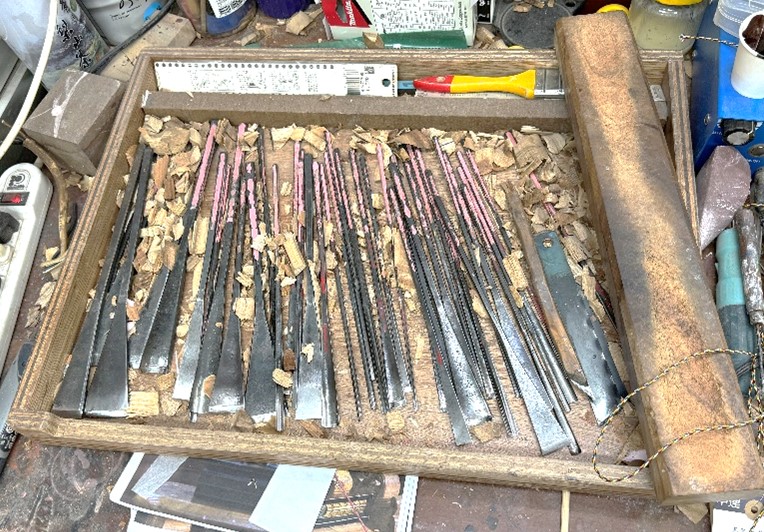 Various engraving tools.
Various engraving tools.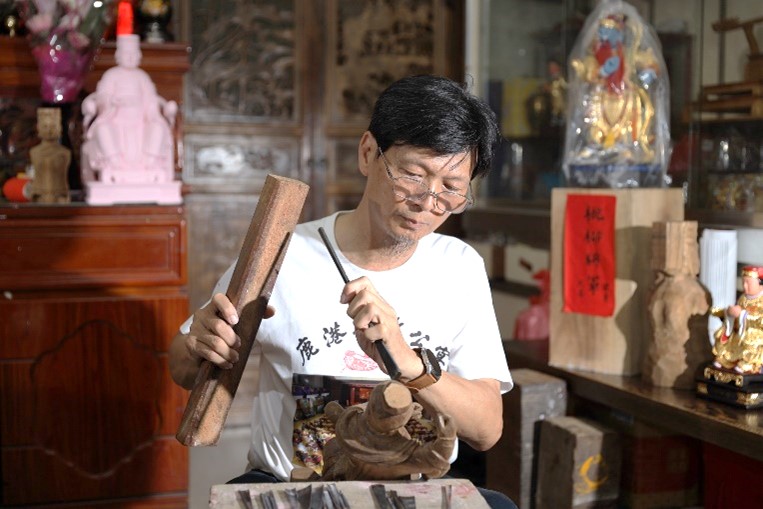 Dedicated carving of statues.
Dedicated carving of statues.
“Initiation of use of ax” refers to selecting clean wood material, cutting it, choosing an auspicious time, preparing fruits, flowers, joss paper and other offerings, reporting the name and address of the sculptor to the god, tapping the wood three times with an ax, reciting the formula, and “cleaning” the wood before starting carving. The ceremony process does not last long and only lasts for approximately ten or twenty minutes.
One of the important techniques of statue sprucing is the “crude prototype preparation,” which is to roughly carve the overall posture and parts of the statue on the wood and is similar to the step of drafting in painting. Another important technique is “face painting:” the face is the part of a statue that best displays the aura, and it requires a delicate and non-sloppy spirit to paint a face perfectly. Other important techniques are the “coloring and gold foil laying” of the statue. The coloring refers to mixing the paint. This technique has become popular only after 1990. Master A-fa’s unique technique of drawing eyes makes the statues of gods particularly lifelike. The really difficult step is to prepare the paint used for gold foil laying, which is related to whether the gold foil can be successfully attached to the statue. Each master has his own unique formula that is not passed down to others. As a result, the apprentices must slowly figure out their own unique formula.
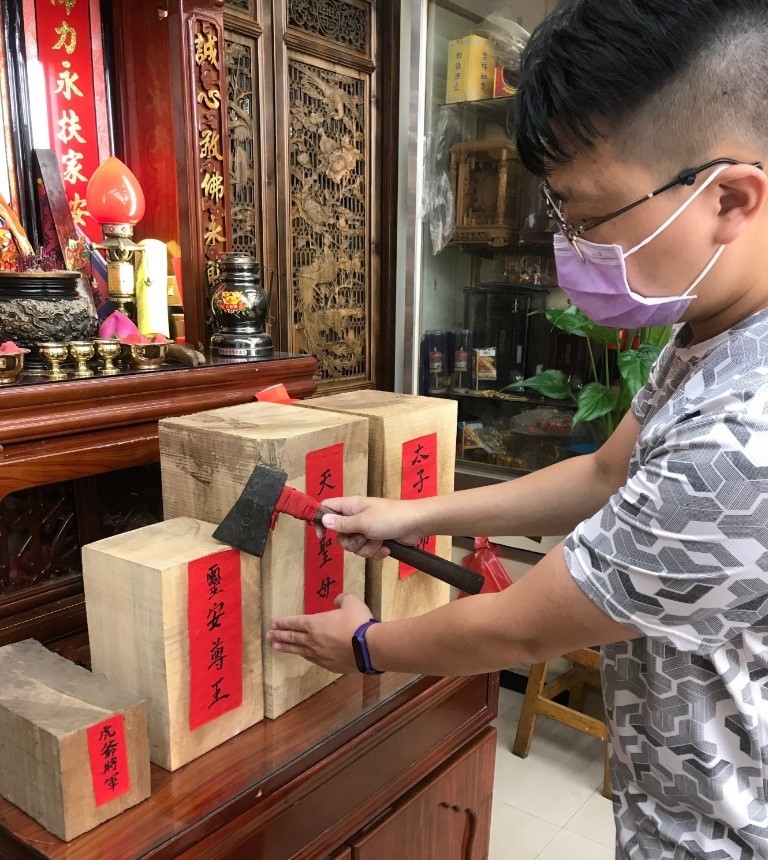 Initiation of use of ax.
Initiation of use of ax.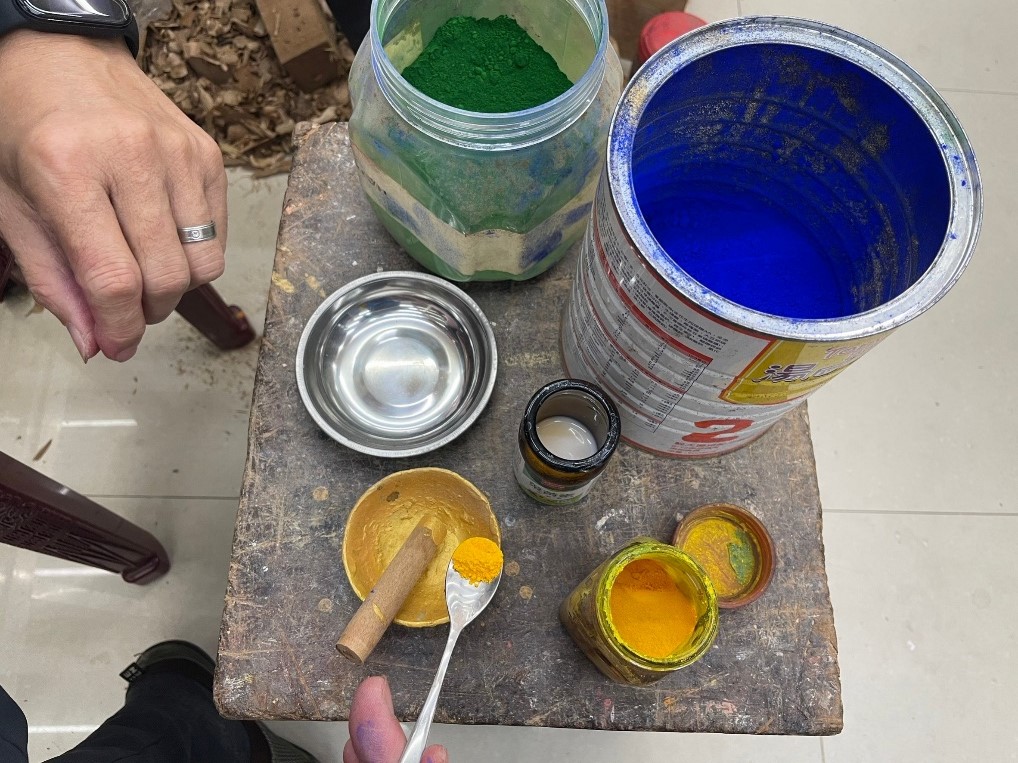 mix the paint.
mix the paint.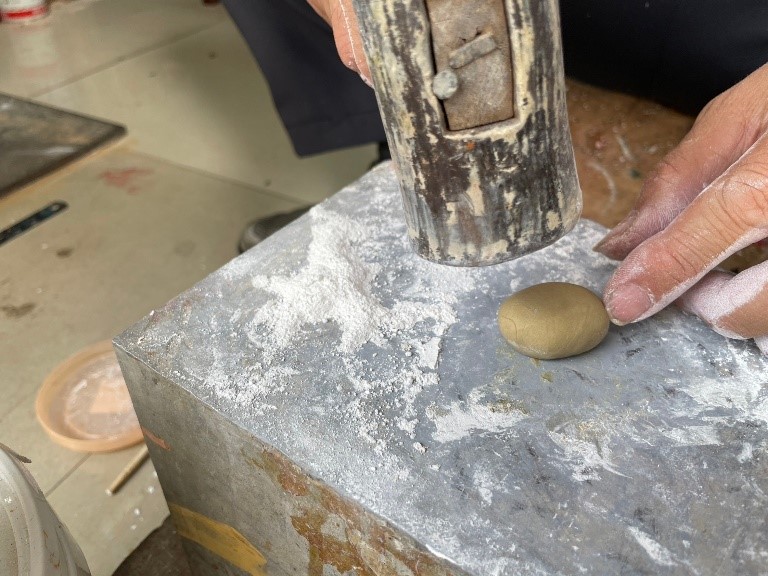
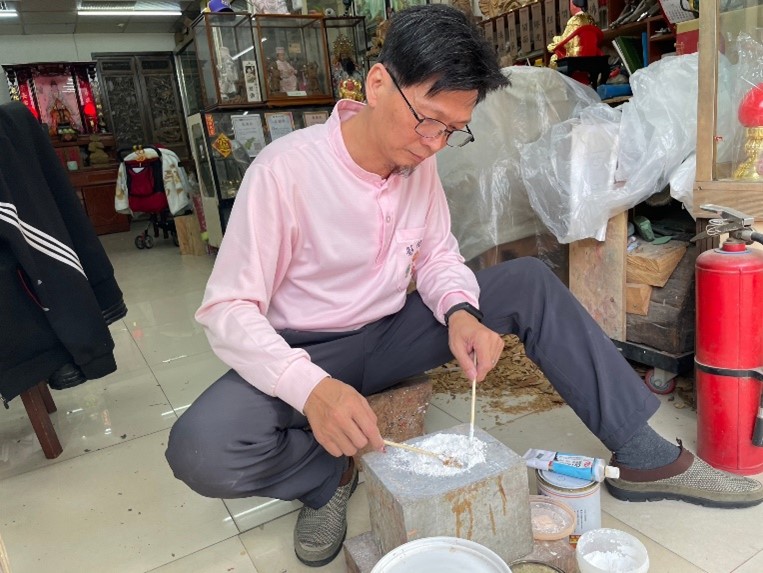
The characteristics of statue sprucing techniques include:
-
1.Clay sculpture: Using soil as the material, the sculptor first draws a sketch to set the proportions. The tools used in clay sculpture include: homemade bamboo chips into various shapes of different sizes as tools, hemp rope, gauze, tissue paper, mineral paint, etc.
-
2.Wood carving: Using camphor wood as the material, the sculptor first draws a draft to set the proportions. The carving tools include axes, hand saws, carving knives, carpenter’s ruler, mineral paints, etc.
-
3.Lacquer thread techniques: Lacquer thread pulling is used to make totems on the robes of gods. Most of totems are auspicious patterns such as dragons, cranes, bats, brocade flowers, eight treasures, etc.
4.Preparation of paint for gold foil laying: Such paint is prepared using dry paint, tung oil and other raw materials. The amount of ingredients must be considered to control the drying time, adhesion, and brightness, so that the gold foil can be adhered meticulously and seamlessly.
5.Painting: A brush is used to carefully draw landscapes, brocade flowers, Chihu, battle armor, and live eyes. The so-called drawing of live eyes is to use a brush to color the eyes of gods to simulate the gradient of real eyes and use more than seven layers of mixed multi-color coloring.
We couldn't help but ask Master A-fa which of the four techniques is the most challenging for him. Master A-fa said that lacquer thread technique is difficult, especially when he wants to add some changes. However, the most difficult part is “shaping.” If there is no inspiration during shaping, he will not be able to create a satisfactory shape. The most difficult part is the face. Sometimes the body has already been carved, but the face is left to be made last because the face cannot be carved without inspiration.
He pointed to the statue of Chi Fu Wang Ye next to the table. The fingers, the spine of the clothes and other details of this statue had been carved, but only the face was still uncarved. Master A-fa said that when sculpting the face, he can’t do it without inspiration, so the most difficult part is probably the face sculpting.
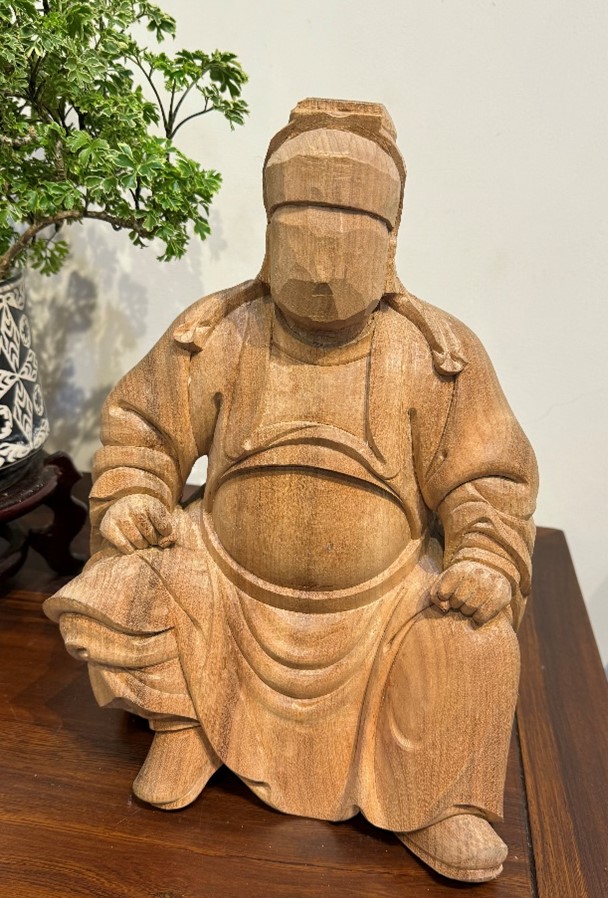
The most difficult thing is facial sculpting
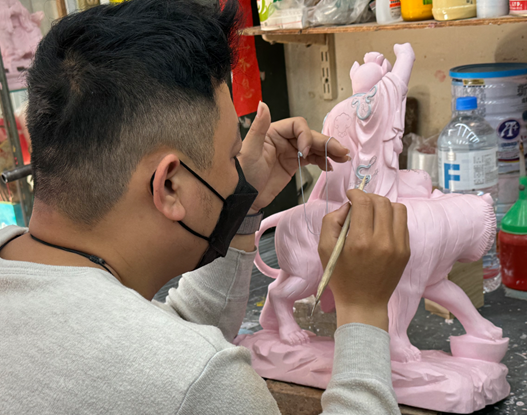
Lacquer thread pulling is also one of the most difficult techniques.

.png)

